Hiroyuki Wakimoto
A New Direction in Bizen Ceramics
May 5
- 31, 2006 |
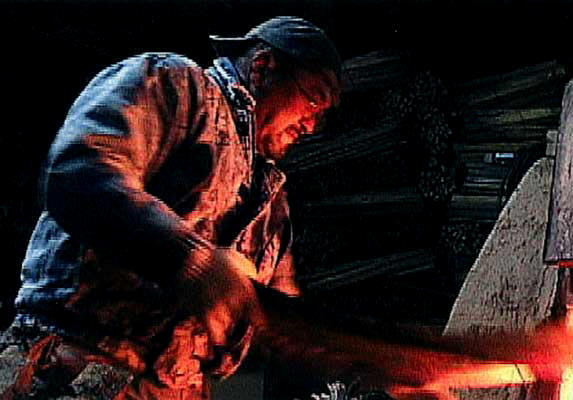 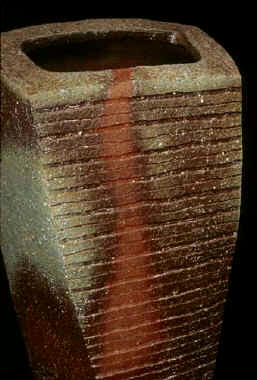
See more of this artist's work:
2002
show,
2003 show,
2004
show,
2005
show,
2006 show,
2007 show,
2009 show,
2010 show,
2012 show,
2016 show
|
Hiroyuki Wakimoto 脇本博之
For centuries,
wood-fired pottery from the "six ancient kilns" in Japan
(Tanba, Bizen, Echizen, Shigaraki, Tokoname, and Seto)
helped cultivate a quiet aesthetic sensibility and an
appreciation for simple unadorned beauty. The pottery center
of Bizen produced many exceptional ceramists including five
Living National Treasures, more than any other historic
pottery areas. This luminous heritage offers great
inspirations for contemporary ceramists, but at the same
time leaves an enormous legacy for them to live up to.
Traditionally, Bizen pottery is made for use. Blessed with a
gorgeous local clay that turns brilliant red after firing,
historically Bizen ceramists emphasized firing effects on
functional but rather conservative forms. It is a challenge
for contemporary Bizen artists to innovate without risking
disconnection from tradition. Hiroyuki Wakimoto is a notable
exception who successfully integrates creativity with the
Bizen tradition.
Born in 1952 in Tsushima, Nagasaki Prefecture in Kyushu,
Hiroyuki Wakimoto received art training in textile design in
Osaka Art College. In his senior year, he decided textile
design was not his interest and left the college. While
visiting a friend who was doing an apprenticeship in Bizen,
Wakimoto found his true calling in Bizen-yaki. He began an
apprenticeship under George Yamashita, an accomplished
ceramist who had studied under Living National Treasure Jun
Isezaki. Nine years later, Wakimoto established his own kiln
and gradually built a reputation as one of the most
distinctive artists in Bizen.
With a great interest in forms
and training in design, Wakimoto creates some of the most
interesting works in contemporary Japanese ceramics. His
works are instantly recognized by bold, sophisticated forms
with clean lines and beautiful fire markings. What sets
Wakimoto apart from many of his peers is his ability to
create astoundingly innovative work without abandoning the
cultural connection of this art form.
For example, one of Wakimoto’s original forms is a
three-legged sake bottle, which traces its conceptual origin
to ancient Chinese wine-servers (ref. 1). The design is a
seamless fusion of the old and new. In another example,
incense burners take the forms of stylized figurines that
may well be inspired by ancient Japanese Haniwa pottery; yet
these forms may also evoke Isamu Noguchi’s whimsical ceramic
sculpture. Even his abstract works are not without a
cultural basis. The "Stone" series (see #13, #17 in current
show), for example, apparently receive their cues from
ancient walls in Japan. Those pieces are sculpted from
chunks of clay rather than thrown on a wheel. The technique,
called kurinuki, offers great freedom for creating unique
shapes. Many of these are composite works composed of
multiple components. To produce contrasting colors, Wakimoto
fires the separate components in different parts of the
kiln. Wakimoto recalled the evolution of his style, "In the
beginning, I cared too much about making my work unique, my
hands struggled with the clay. Then one day, I set my hands
free to express my feelings without thinking too hard. From
that day, my work became spontaneous."
The Achilles heel of many innovative wood-fire ceramists is
in their firing techniques. In this respect, Wakimoto’s
mastery of the firing process is legendary. He does a
14-days firing once a year in a three-chambered noborigama
(climbing kiln) that holds up to a thousand pieces,
representing his entire year’s work. This working style
requires extraordinary confidence and impeccable technical
expertise. He keeps detailed records of every firing,
including data on temperature and the exact position of
every piece in the kiln. This meticulous approach and
technical excellence allow Wakimoto to carry his artistic
visions to fruition.
Wakimoto has won many prestigious awards in his career,
including the Grand Prize of Yakishime Exhibition. In 2002,
his work was first exhibited in America in Touching Stone
Gallery. The show was enthusiastically received. Two years
later, he was invited by the New Mexico Museum of
International Folk Art to show at the International Folk Art
Market. During that visit, Wakimoto toured several ancient
Anasazi Indian ruins in the area. That visit further
broadened his interest in other ancient cultures. The
ensuing years saw interesting new works that might have been
inspired by Anasazi Indian architecture. Wakimoto’s untiring
quest for new ideas is possibly the most significant
attribute of a creative artist. Indeed, this quality may
ultimately distinguish art itself from craft.
Ref. 1: Omen. Ceramics: Art & Perception, no. 48, pp. 97 -
99. 2002.
|
Click on images to view selected
pieces
To order call 505-988-8072, see
Inquiry/Order |
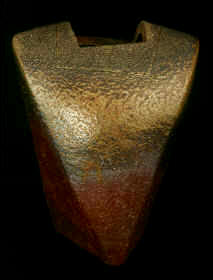 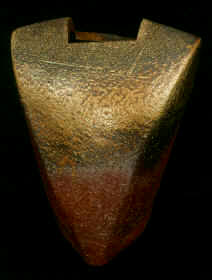 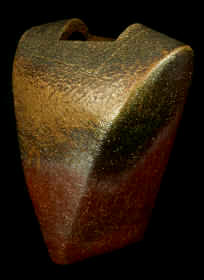
Vase Form No. 1
wood-fired ceramic 18"h x 14.5" x 8" (3 views)
Sold
|
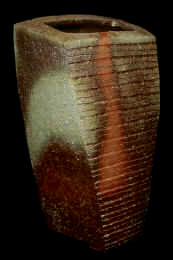 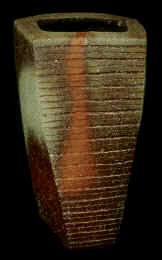 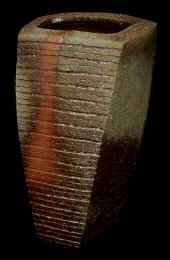
Vase Form No. 2
wood-fired ceramic 17"h x 10" x 7" (3 views)
Sold
|
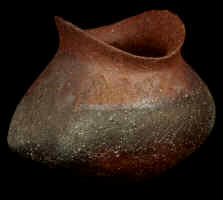 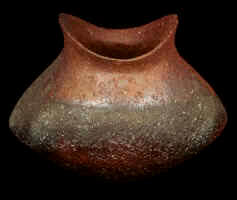
Vase Form No. 3
wood-fired ceramic 7.5"h x 10" x 7.5" (2 views)
Sold
|
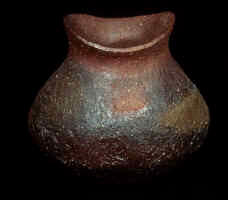 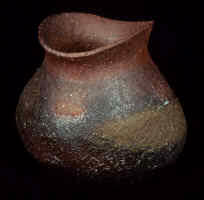
Vase Form No. 4
wood-fired ceramic 6"h x 6.5" x 5" (2 views)
Sold
|
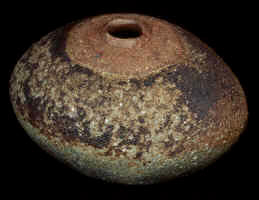 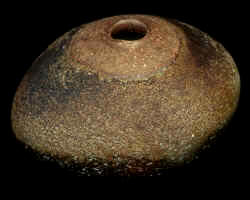
Vase Form No. 5
wood-fired ceramic 4.5"h x 7.5" x 7" (2 views)
Sold
|
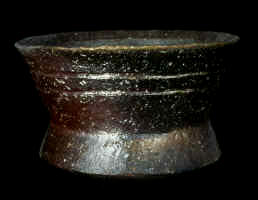 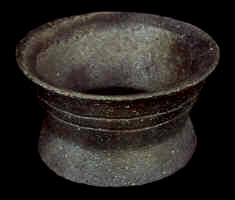
Vase Form No. 6
wood-fired ceramic 5"h x 7.5" x 7" (2 views)
Sold
|
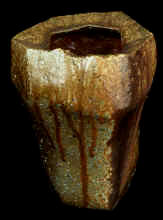 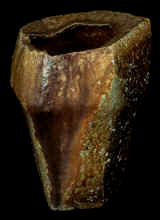
Vase Form No. 7
wood-fired ceramic 10"h x 7" x 6.5" (2 views)
Sold
|
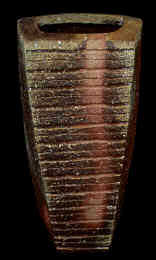 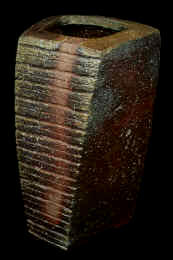
Vase Form No. 8
wood-fired ceramic 9.5"h x 5.5" x 4" (2 views)
Sold
|
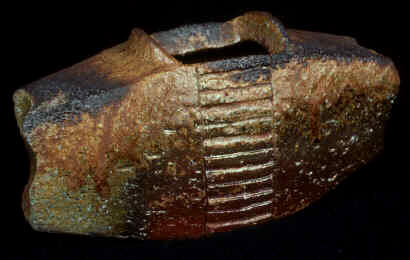 
Vase Form No. 9
wood-fired ceramic 4.5"h x 8.5" x 3" (2 views)
Sold |
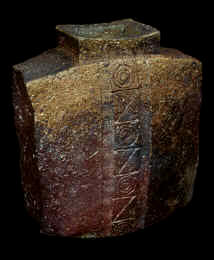 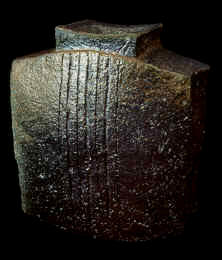
Vase Form No. 10
wood-fired ceramic 8"h x 7" x 3.5" (2 views)
Sold
|
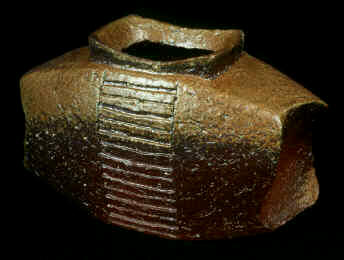 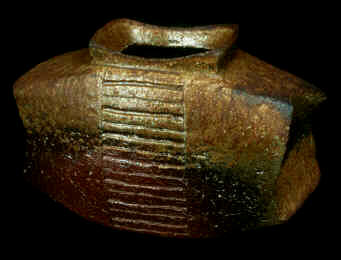
Vase Form No. 11
wood-fired ceramic 5.5"h x 9" x 4.5" (2 views)
Sold
|
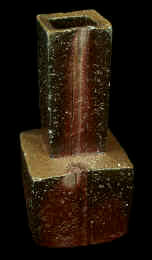 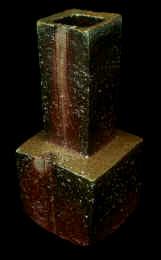
Vase Form No. 12
wood-fired ceramic 8.5"h x 3.75" x 3.75" (2 views)
Sold
|
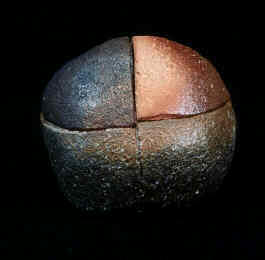 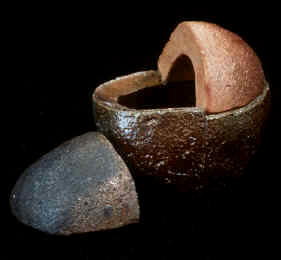
"Stone" Vase No. 13
wood-fired ceramic 4.5"h x 4.5" x 4" (2 views)
Sold
|
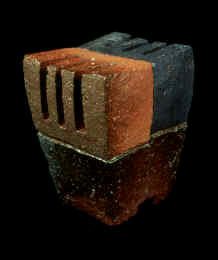 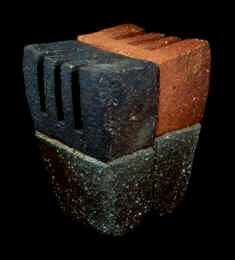
Incense Burner No. 16
wood-fired ceramic 4.75"h x 3.75" x 3.5" (2 views)
Sold
|
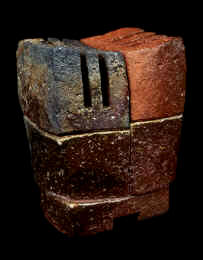 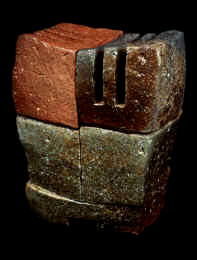
Incense Burner No. 14
wood-fired ceramic 6.5"h x 5" x 4" (2 views)
Sold
|
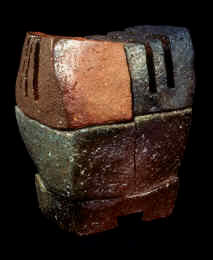 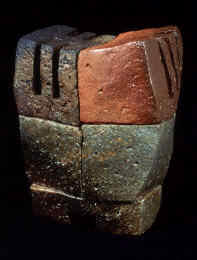
Incense Burner No. 15
wood-fired ceramic 6.5"h x 5" x 4" (2 views)
Sold
|
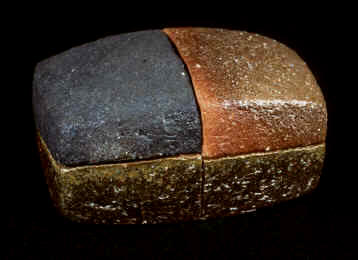 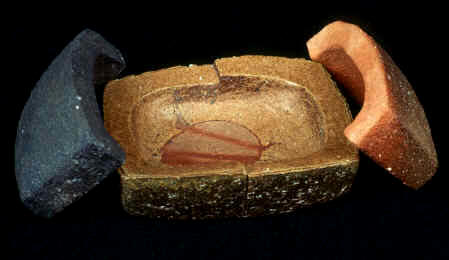
"Stone" Vase No. 17
wood-fired ceramic 3.5"h x 6" x 4.5" (2 views)
Sold
|
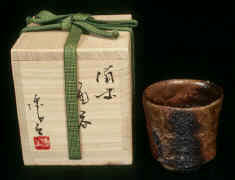
Guinomi No. 18
wood-fired ceramic 2.5"h x 2.5" x 2.25" (w/ box)
Sold
|
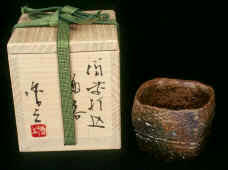
Guinomi No. 19
wood-fired ceramic 2.25"h x 2.5" x 2.5" (w/ box)
Sold
|
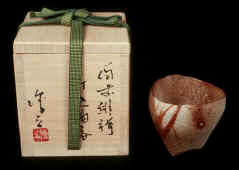
Guinomi No. 20
wood-fired ceramic 2.25"h x 2.5" x 2.5" (w/ box)
Sold
|
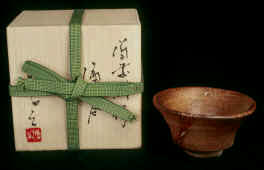
Guinomi No. 21
wood-fired ceramic 2"h x 3.25" x 3.25" (w/
box)
Sold
|
Exhibitions & Awards
1952 Born in Tsushima, Nagasaki Prefecture, Kyushu
1975 Osaka Art College
1981 Apprenticeship under Bizen ceramist Joji Yamashita
1990 Established own kiln in Bizen
Honorable Mention, 52nd Itt-sui Kai Ten
1991 8th Cha-no-yu no Zo-kei Ten, Tanabe Museum
2nd Biennial Ceramic Exhibition
38th Japan
Traditional Arts & Crafts Exhibition
1st
Yaki-shime Ten
Honorable Mention, 53rd Itt-sui Kai Ten
1992 9th Cha-no-yu no Zo-kei Ten, Tanabe Museum
30th Asahi Ceramics Exhibition
39th Japan Traditional Arts & Crafts Exhibition
54th Itt-sui Kai Ten
1993 Honorable Mention, 3rd Biennial Ceramic Exhibition
31st Asahi Ceramics Exhibition
36th Japan Traditional Arts & Crafts Exhibition,
China Branch
Asahi Contemporary Arts & Crafts Invitational
Exhibition
1994 11th Cha-no-yu no Zo-kei Ten, Tanabe Museum
Grand Prize, 2nd Yaki Shime Juried Show
Chairman’s Award, Japan Arts & Crafts
Exhibition, Chu-goku Chapter
1995 12th Cha-no-yu no Zo-kei Ten, Tanabe Museum
13th Japan Ceramics Exhibition
42th Japan Traditional Arts & Crafts Exhibition
1996 13th Cha-no-yu no Zo-kei Ten, Tanabe Museum
34th Asahi Ceramics Exhibition
1997 14th Cha-no-yu no Zo-kei Ten, Tanabe Museum
35th Asahi Ceramics Exhibition
44th Japan Traditional Arts & Crafts Exhibition
Nominated as a permanent member of Japan Arts &
Crafts Association
1998 15th Cha-no-yu no Zo-kei Ten, Tanabe Museum
1999 37th Asahi Ceramics Exhibition
2000 3 - 4 shows every year in Tokyo, Osaka, and Kobe
2002 Touching Stone Gallery, Santa Fe, New Mexico
2003 Kuroda Toen Gallery, Tokyo
Tenmaya, Takamatsu
Touching Stone Gallery, Santa Fe, New
Mexico
2004 Kuroda Toen Gallery, Tokyo
Tenmaya, Fukuoka
Touching Stone Gallery, Santa Fe, New Mexico
Invited artist, Santa Fe International Folk Art
Market 2004
2005 Kuroda Toen Gallery, Tokyo
Touching Stone Gallery, Santa Fe, New Mexico
2006 Touching Stone Gallery, Santa Fe, New Mexico
Publications
2002 Omen - An article on Hiroyuki Wakimoto's work, by
Tim Wong & Akko Hirano. In: Ceramics: Art & Perception, no.
48, pp. 97 - 99. |










































